目录
- 1. 相关知识点
- 2. 例子
- 2.6. 使用唯一标识码替换员工ID
- 2.7- 产品销售分析 I
- 2.8 - 进店却未进行过交易的顾客
- 2.9 - 上升的温度
- 2.10 - 每台机器的进程平均运行时间
- 2.11- 员工奖金
- 2.12-学生们参加各科测试的次数
- 2.13-至少有5名直接下属的经理
- 2.14 - 确认率
1. 相关知识点
-
left join
- 以左表为基准,返回左表中所有的行,同时返回右表中与左表匹配的行。
- 如果右表中没有匹配的行,则用NULL填充。
-
join和left join的区别
- 如果是join则右侧的数据有的就插,没的就啥也不干,交白卷,也不留null
- 但是left join让右侧数据在没有对应数据时补上了null
-
CROSS JOIN产生了一个结果集,该结果集是两个关联表的行的乘积
- 2行表,与3行表使用cross join,得到2*3=6行数据
-
相关函数
函数 例子 含义 DATEDIFF(前,后) DATEDIFF(‘2007-12-31’,‘2007-12-30’); # 1 两个日期的差,前-后 sum() sum(salary) 根据分组求和 if (判断条件,符合赋值,不符合赋值) if (salary>1000,1,0) 根据if条件语句取值 sum(if( )) sum( if (salary>1000,1,0)) 根据if条件语句赋值再根据分组求和 avg(if( )) avg( if (salary>1000,1,0)) 根据if条件语句赋值再根据分组求均值 round(,n) round(salary,3) 保留n位小数
2. 例子
2.6. 使用唯一标识码替换员工ID
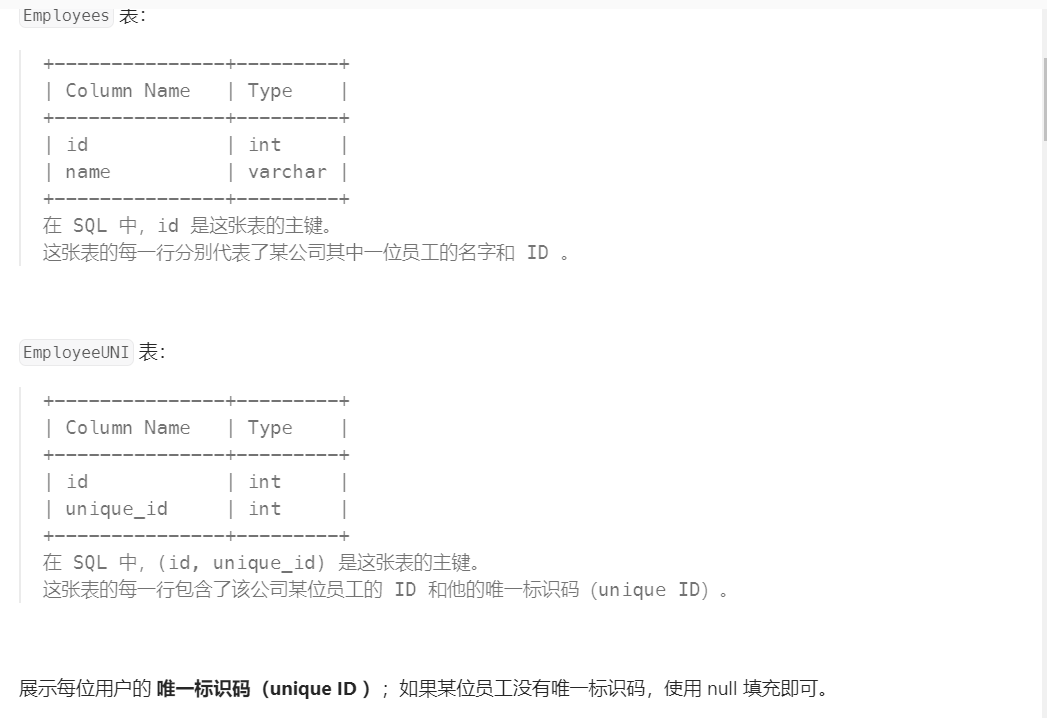
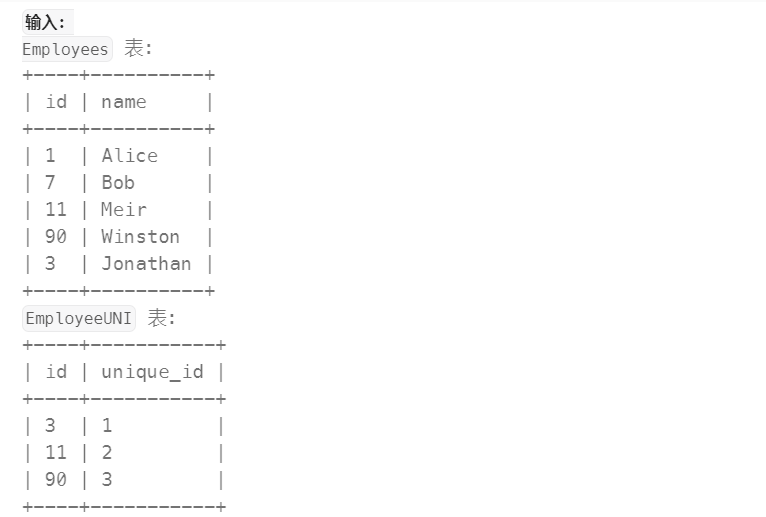
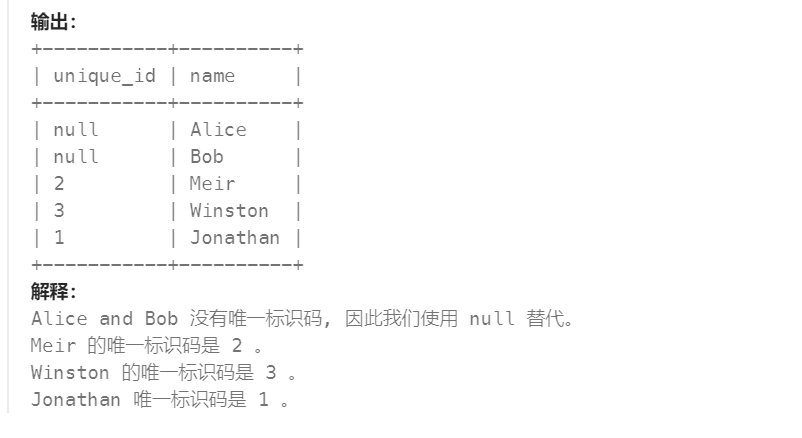
select unique_id,name
from Employees e left join EmployeeUNI e1
on e.id=e1.id;
2.7- 产品销售分析 I
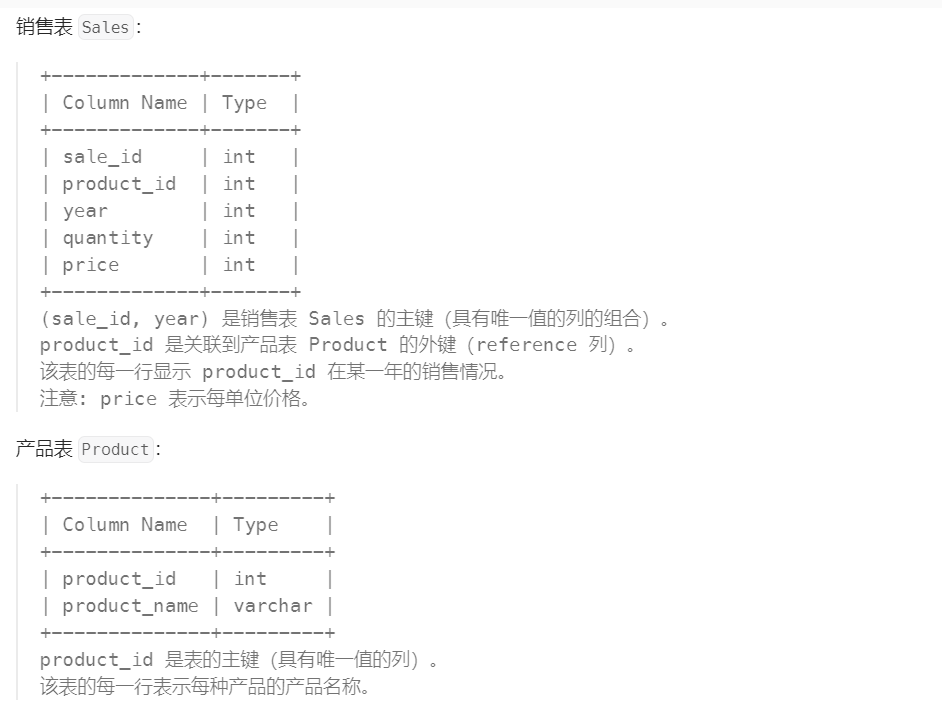

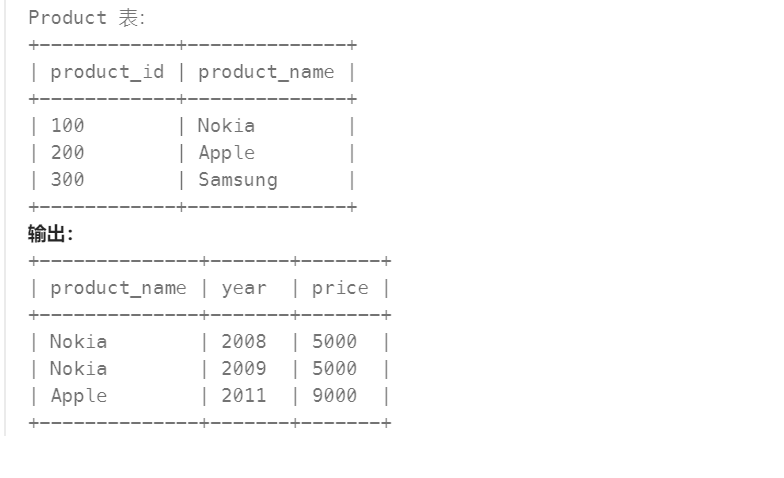
select product_name,year,price
from Sales left join Product
on Sales.product_id = Product.product_id;
2.8 - 进店却未进行过交易的顾客
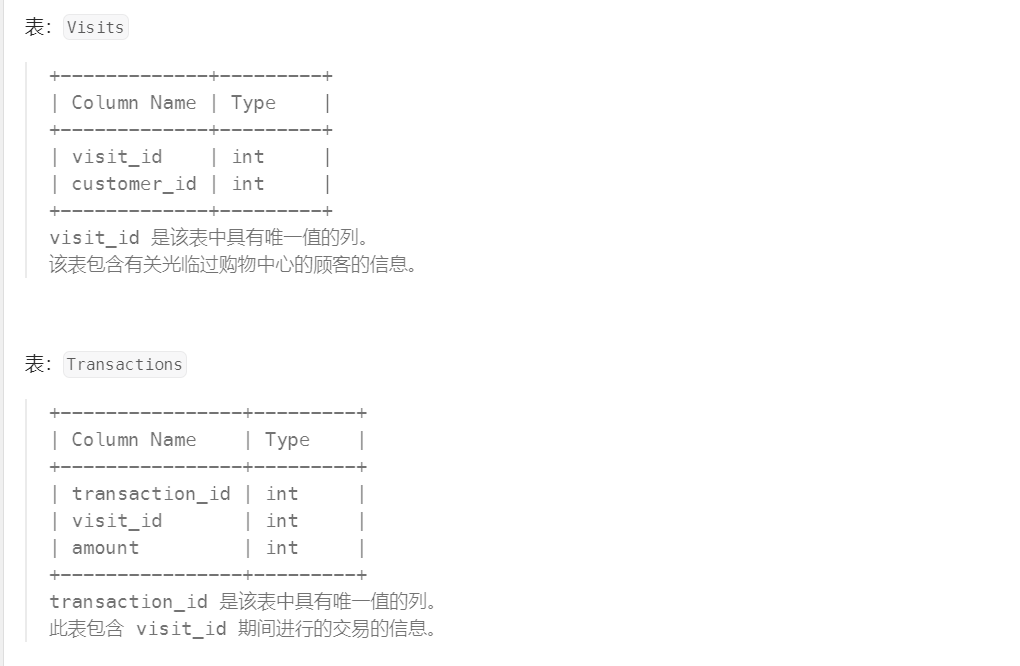

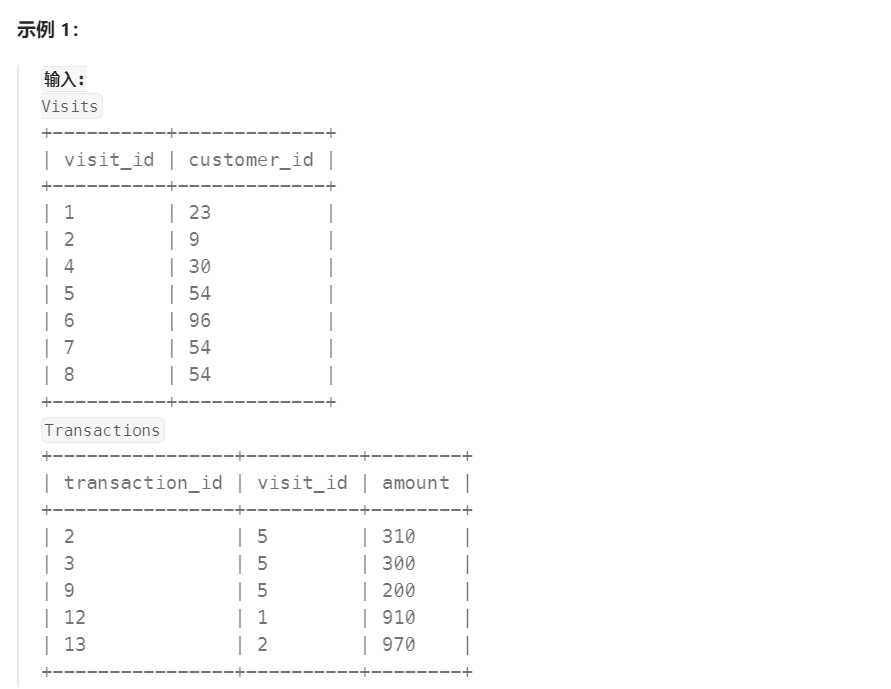

-- 顾客可能光顾了购物中心但没有进行交易,一个顾客可能光顾多次,需用顾客id分组
-- 使用COUNT(*)可以输出GROUP BY后每个分组中的数据数量
-- 左连表,右表没有的数据赋值为null,即没有交易的transaction_id 为nullselect v.customer_id,count(*) as count_no_trans
from Visits v left join Transactions t on v.visit_id=t.visit_id
where t.transaction_id is null group by v.customer_id;
2.9 - 上升的温度

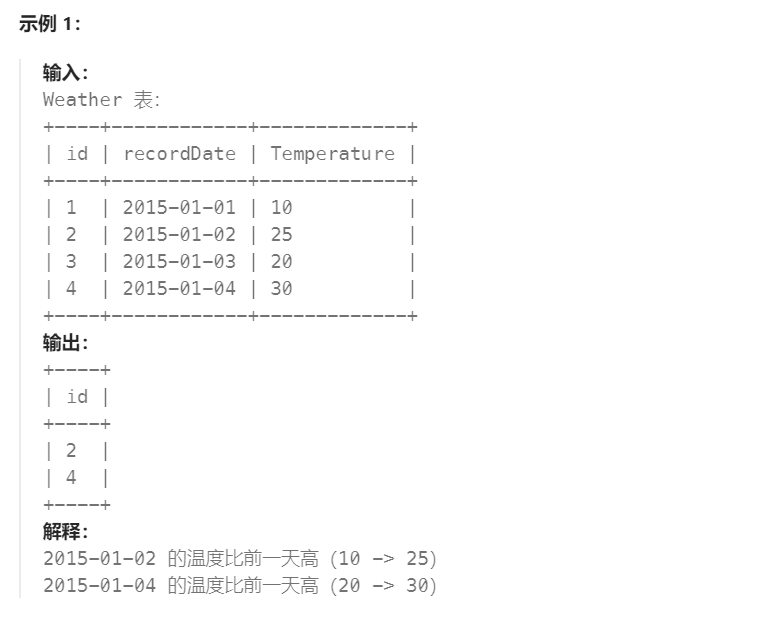
-- 找出与之前(昨天的)日期相比温度更高的所有日期的 id
-- DATEDIFF('2007-12-31','2007-12-30'); # 1
-- DATEDIFF('2010-12-30','2010-12-31'); # -1select w1.id
from Weather w1, Weather w2
wheredatediff(w1.recordDate,w2.recordDate)=1 and w1.temperature>w2.temperature;
2.10 - 每台机器的进程平均运行时间

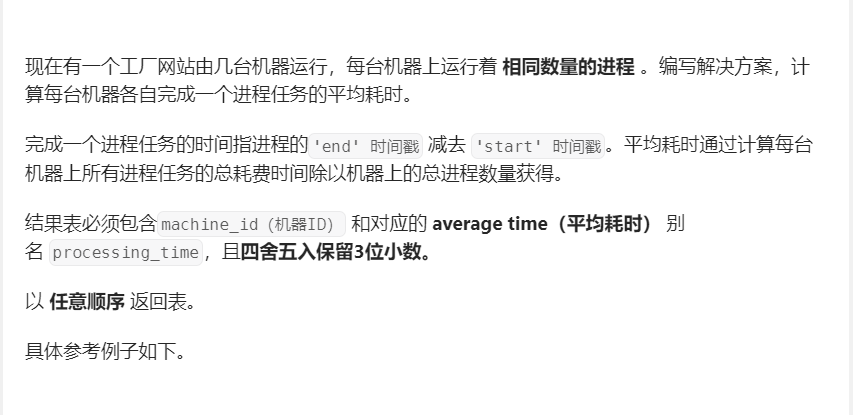
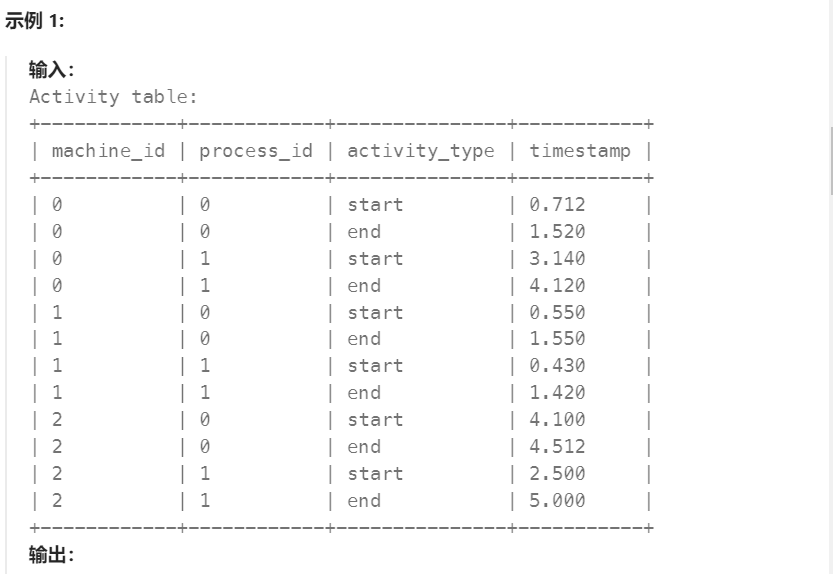
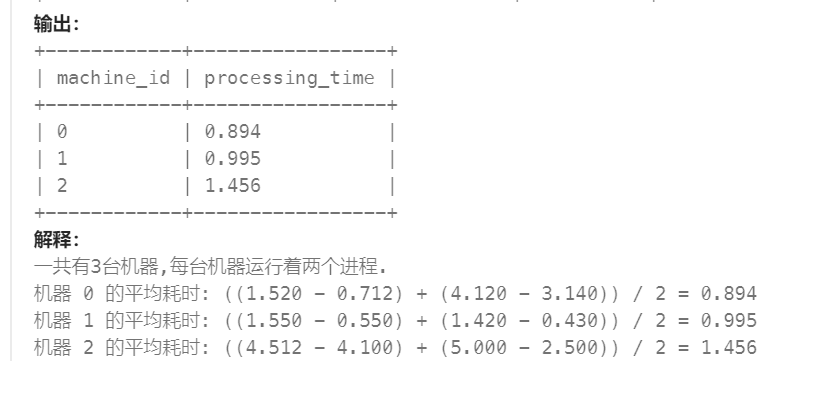
-- sum(if(activity_type = 'end',timestamp ,-timestamp ))
-- 如果activity_type为“end”,值为timestamp,为“start” 为-timestamp,所有数相加=end-start
-- count(distinct process_id),获取同一机器有几个进行idselect machine_id , round(sum(if(activity_type = 'end',timestamp ,-timestamp ))/count(distinct process_id),3) as processing_time
from Activity
group by machine_id;-- AVG(IF(activity_type = 'start', -timestamp, timestamp))
-- 如果activity_type为“end”,值为timestamp,为“start” 为-timestamp,所有数相加=end-start
-- 将所有数求平均,avg(1,2,3,4)/4,多除了2倍SELECT machine_id, ROUND(AVG(IF(activity_type = 'start', -timestamp, timestamp))*2,3) AS processing_time
FROM Activity
GROUP BY machine_id;
2.11- 员工奖金
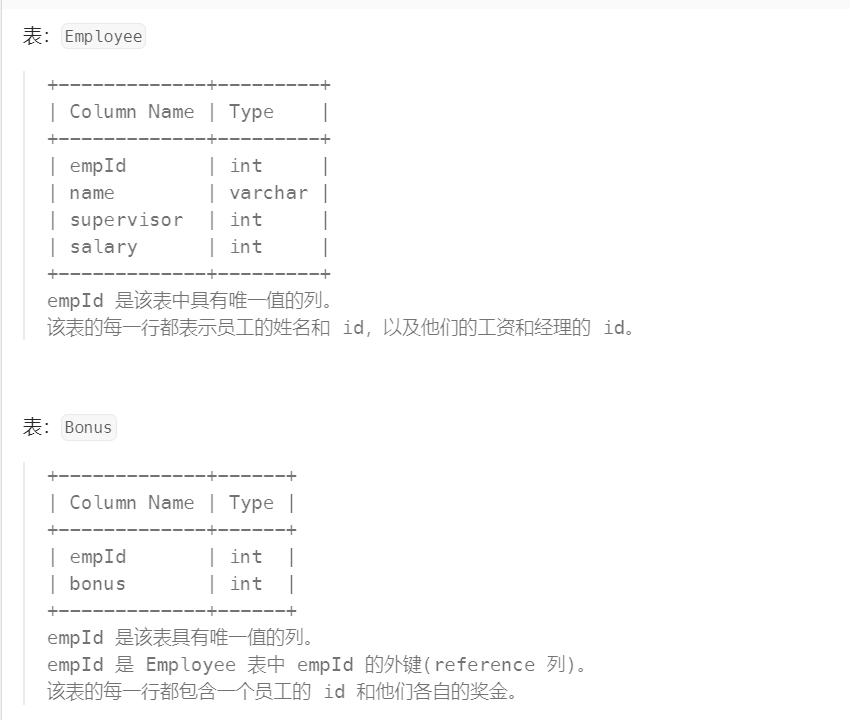

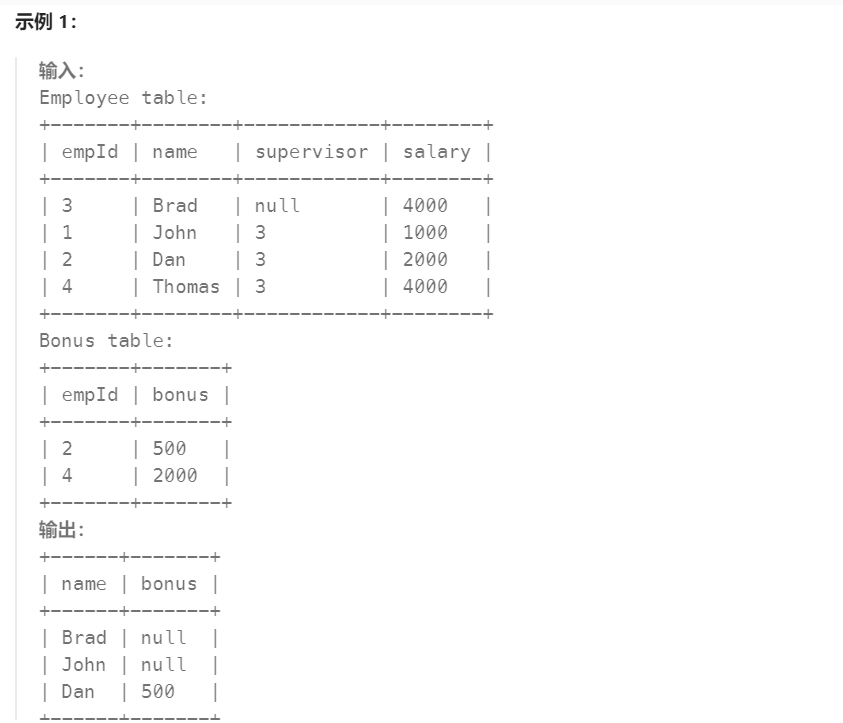
-- join和left join的区别
-- 如果是join则右侧的数据有的就插,没的就啥也不干,交白卷,也不留null
-- 但是left join让右侧数据在没有对应数据时补上了null
select e.name,b.bonus
from Employee e left join bonus b
on e.empId=b.empId
where b.bonus <1000 or b.bonus is null;
2.12-学生们参加各科测试的次数
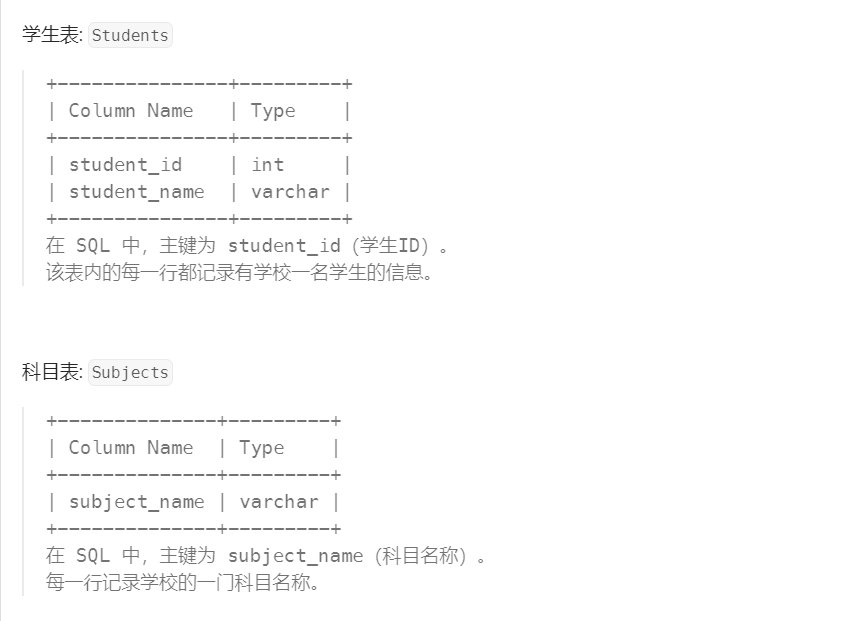
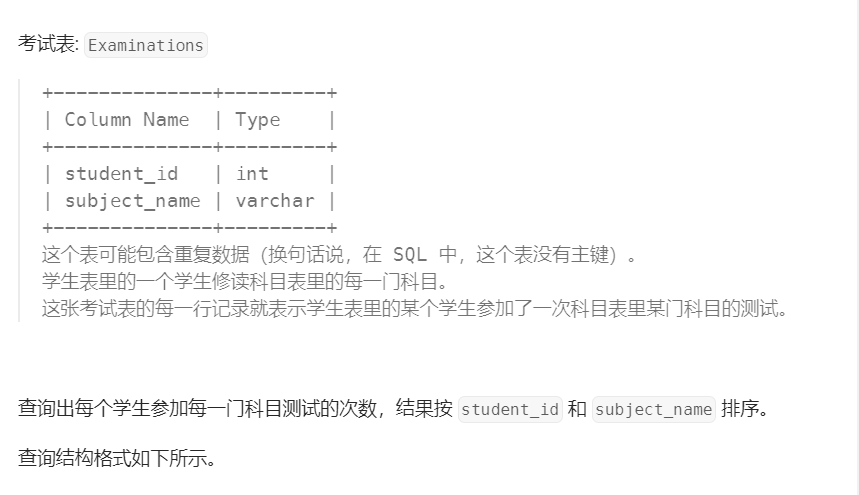
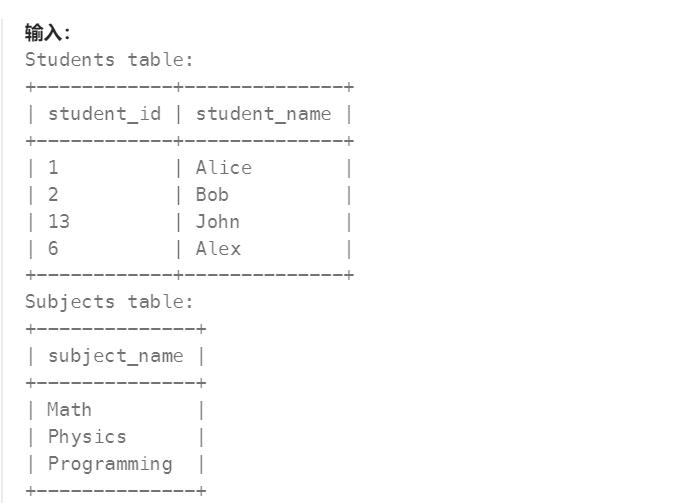

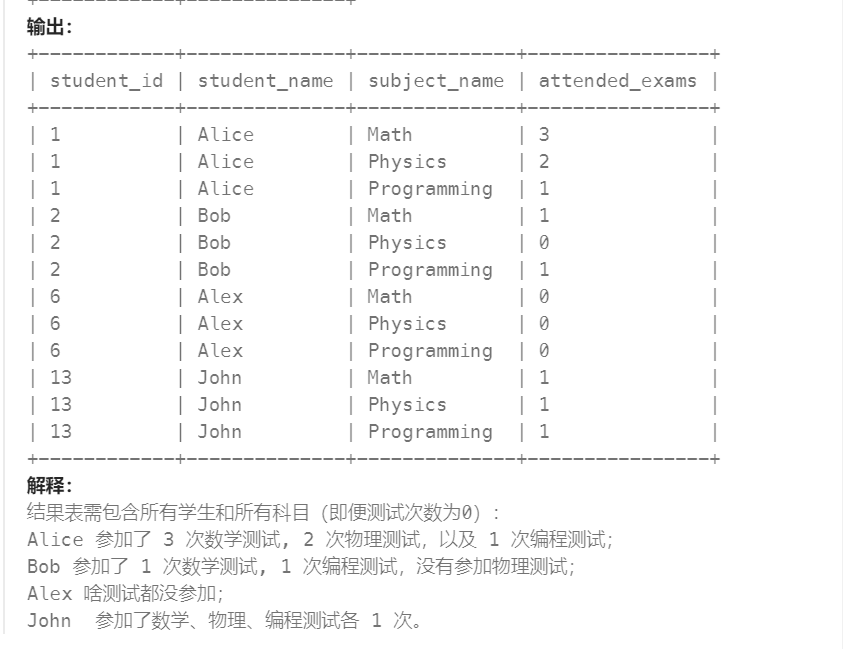
-- 学生表中,id是唯一的,将他作为主表
-- CROSS JOIN产生了一个结果集,该结果集是两个关联表的行的乘积
-- 2行表,与3行表使用cross join,得到2*3=6行数据
select st.student_id, st.student_name,su.subject_name,count(e.subject_name) AS attended_exams
from Students st
cross join Subjects su
left join Examinations e
on e.student_id=st.student_id and e.subject_name=su.subject_name
group by st.student_id, st.student_name,su.subject_name
order by st.student_id,st.student_name;
2.13-至少有5名直接下属的经理
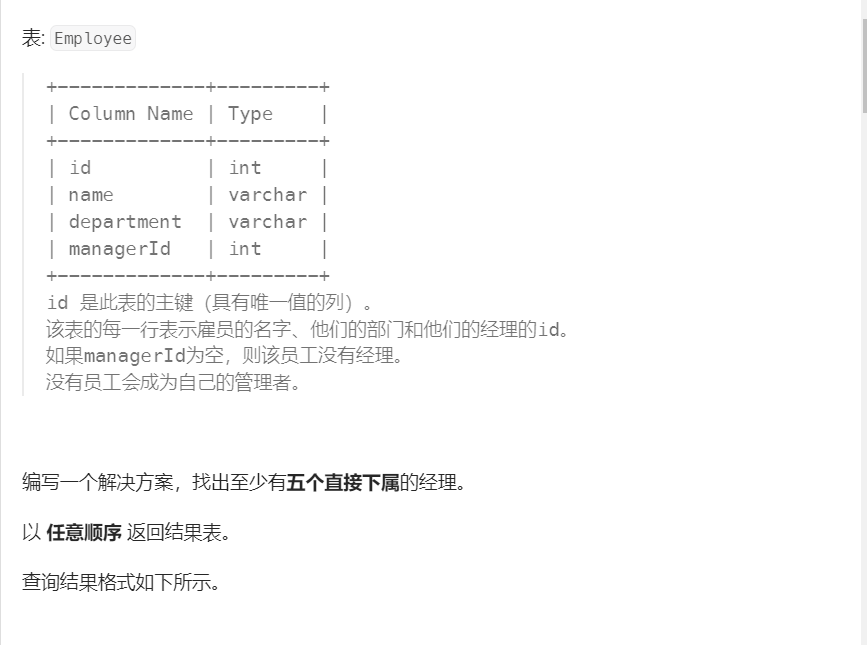
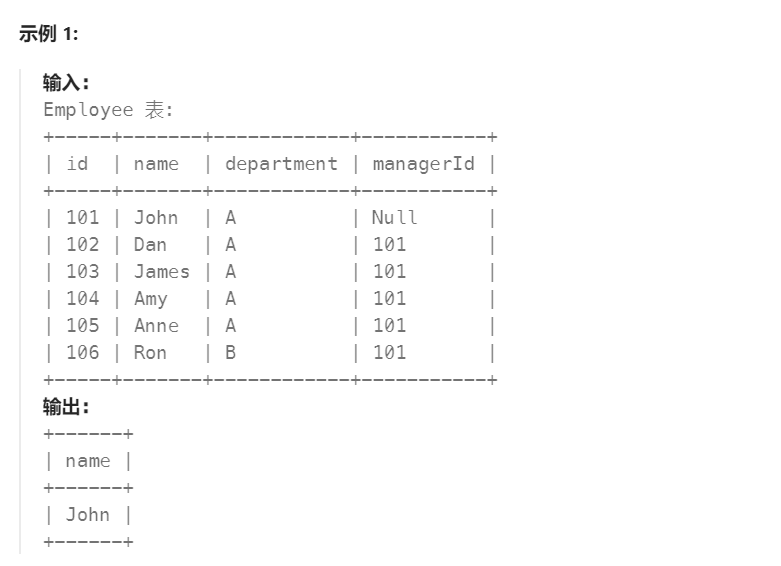
select name
from Employee
where id in (select managerId -- 查找大于5的经理idfrom Employeegroup by managerId -- 根据id分组having count(*)>=5); -- 根据分组的数据进行求个数
2.14 - 确认率


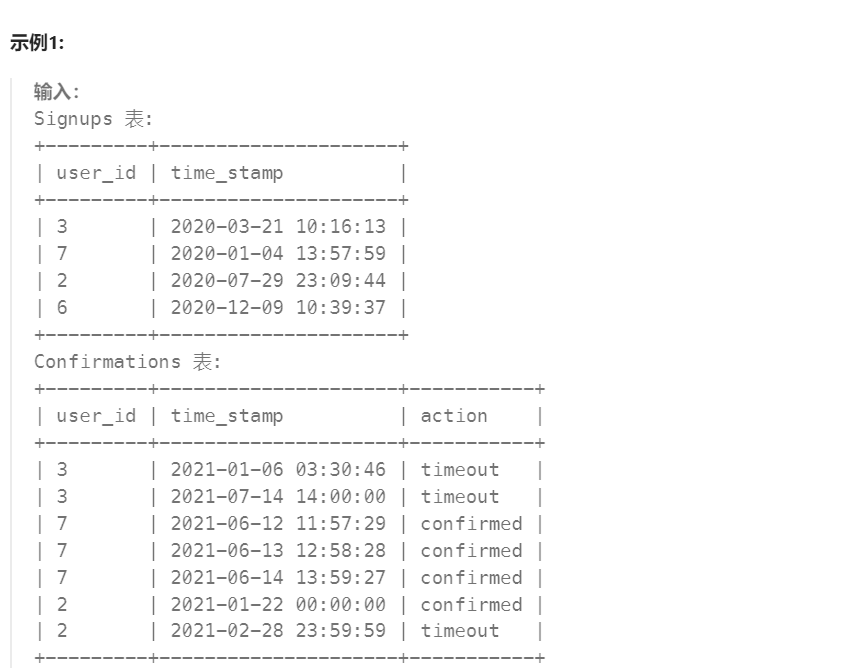
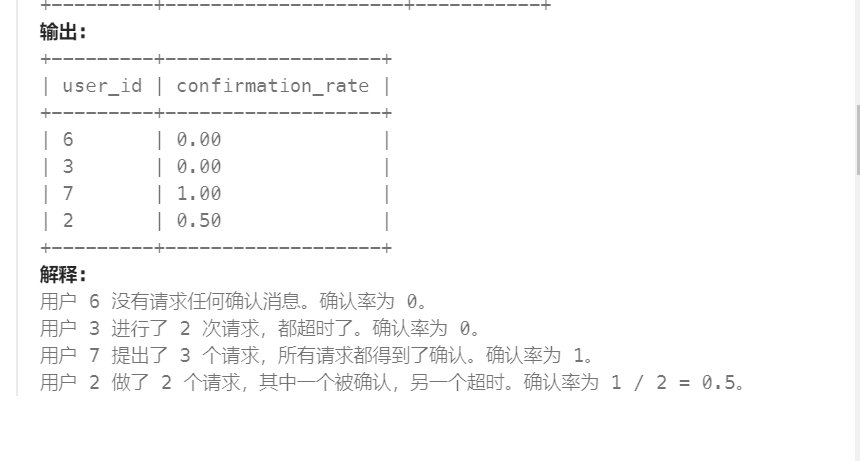
-- s为注册表,有所有用户的信息,即为主表
select s.user_id,round(sum(if(action="confirmed",1,0))/count(s.user_id),2) confirmation_rate
from Signups s
left join Confirmations c
on s.user_id =c.user_id
group by s.user_id;





)

)





)





